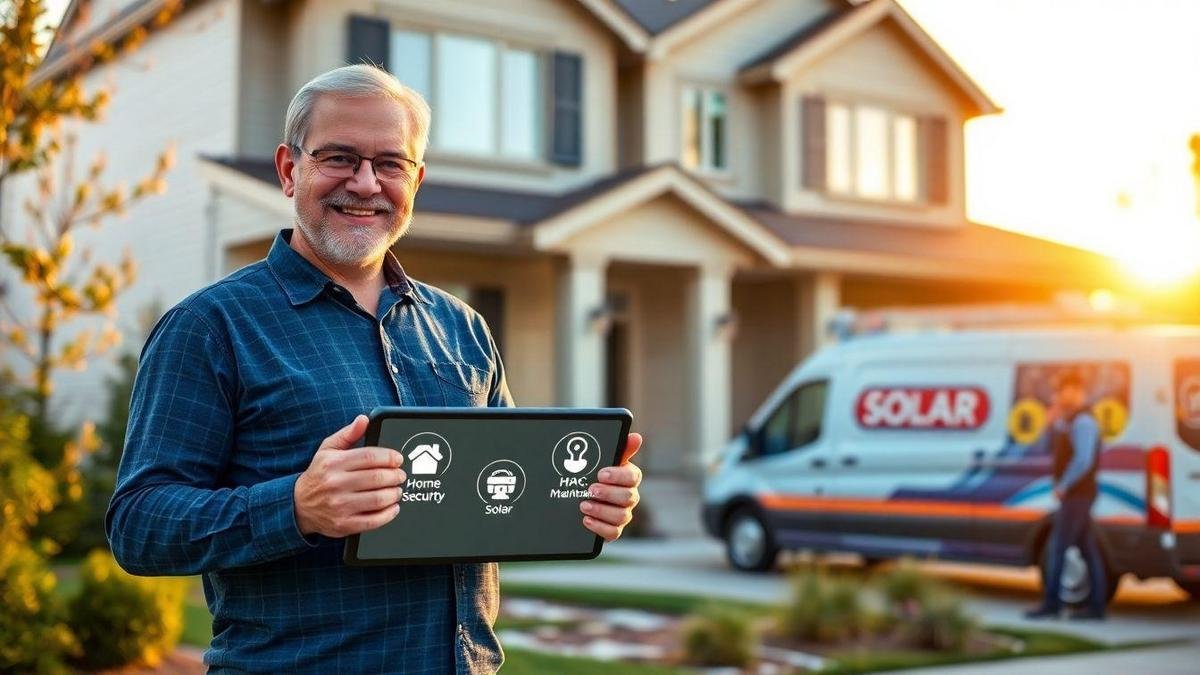Real estate upselling and cross-selling tactics guide the agent to boost deal value and client satisfaction. They learn lead segmentation by intent and budget, and the key data points agents use like location, price range, and timeline. They see timing rules for offers after tours and inspections, and how short follow-up windows raise conversions. They explore bundles such as staging, warranties, and upgrades, how to price them, and sample structures that sell. They practice scripts and role play to close upgrades, package add-on services for recurring revenue, and use digital CRM tools to automate segmentation and email sequences. They track attach rate, AOV, and conversion rate, and follow legal and ethical limits while setting up clear dashboards for reporting.
Key Takeaway
- Highlight premium features during tours.
- Bundle services like staging and inspections.
- Offer mortgage and insurance referrals.
- Present upgrade options at contract signing.
- Follow up with tailored property suggestions.

Lead segmentation for cross-selling properties
Agents treat lead segmentation like a map. They break a crowd into small, clear groups so offers land where they matter. By sorting leads, an agent can match a buyer who wants a family home with nearby listings, or present an investor additional units. This saves time and raises the chance of a second or third sale, a key part of Real estate upselling and cross-selling tactics.
Good segmentation blends behavior and demographics. Agents watch what a lead clicks on, which emails they open, and which listings they tour. Then they layer in age, family size, and job stability. That mix reveals who is ready to upgrade, who will wait, and who might accept a rental-to-own pitch. Many teams pair this approach with a focused lead generation and tracking toolkit to turn signals into action.
Segmentation is a living file, not a drawer. Leads move from cold to warm as needs shift. When an agent reads those shifts fast, they pitch the right next property — a condo for downsizers, a duplex for investors, or a nearby lot for a family dreaming of space. Bold, timely offers turn interest into a sale.
How they group buyers by intent and budget
Agents split buyers by intent first: looking, ready, or ready-to-buy-now. Looking buyers get broad content and inspiration. Ready buyers receive focused comparisons and incentives. Ready-to-buy leads get fast calls and showing slots. This keeps messages sharp and relevant.
Budget slices refine the groups. A lead’s price range narrows choices to realistic matches. For example, a buyer in the 300–400k range gets different cross-sell options than a luxury buyer. That way, agents avoid pitching a mansion to someone saving for a starter home and instead show the right upgrades.
Data points agents use: location, price range, timeline
Agents collect several data points to rank leads and match properties. These include:
- Location preference and commute tolerance
- Price range and financing pre-approval
- Timeline to buy or move
- Property type preference (condo, single-family, multi-family)
- Engagement signals like open house visits and email clicks
Each point acts like a filter. Location narrows the map. Price range trims out impossible matches. Timeline sets urgency: a buyer moving next month needs ready listings; a long-term buyer can be nurtured. Together, these details guide which cross-sell offers make sense and when to present them.
Best tools for segmenting leads
Top agents lean on a few tools: a CRM to log behavior, email automation to drip targeted content, and analytics to spot trends. Tools like property search trackers and lead scoring plug into CRMs so agents see who is hot. For teams building a modern stack, a clear primer on predictive analytics and a guide to website optimization for lead capture help turn raw data into reliable segmentation. A clean dashboard helps them act fast and cross-sell with confidence.

Real estate upselling and cross-selling tactics for timing strategies
An agent who masters timing turns casual interest into add-on sales. Right after a tour or inspection, the buyer’s picture of the home is fresh. That moment is prime for Real estate upselling and cross-selling tactics because emotions and details line up. Agents who act in that window capture attention before it cools.
Buyers move fast or they drift. Presenting an upgrade or service while the buyer still feels the space keeps momentum. They remember the walkthrough, the light in the kitchen, the closet size — and that memory makes a premium offer feel natural. A quick, confident pitch makes the extra option seem like the missing piece, not a hard sell.
Timing also helps organize workload and follow-up. When teams set clear windows, they treat leads differently: immediate interest gets one path; slower buyers get another. That structure means fewer missed chances and more wins. Simple rules save energy and lift conversions.
When they present offers after tours or inspections
An agent who presents offers right after a tour should be brief and specific. Point out one or two clear upgrades — such as a warranty, fast closing, or minor renovation credit — tied to features seen during the tour. That connection makes the offer feel like an obvious next step, not a random pitch.
If the inspection reveals issues, shift tone to problem-solver. Present fixes or credits as ways to keep the sale moving. When the buyer worries, a calm, timely offer that solves a pain point wins trust.
How short follow-up windows raise conversion rates
Short follow-up windows keep the deal warm. A call or message in the first 24 hours uses the same emotional heat from the tour. Buyers who get a prompt follow-up are more likely to answer, ask questions, and say yes. Teams that want to improve these touchpoints often pair their playbook with practical guidance on conversion rate tactics and targeted retargeting with AI to re-engage leads who cool off.
Practical timing examples work like a recipe. Agents who schedule contact points see clear lifts in conversions:
- Within 2 hours: quick check-in and offer of next steps
- 24–48 hours: tailored upsell tied to the tour or inspection
- 5–7 days: gentle reminder and one last value-add
Simple calendar rules to boost upsell success
Keep the calendar simple: block two-hour windows after tours for immediate outreach, set a 24-hour follow-up task, and add a 7-day reminder for a soft upsell. These three rules make follow-up automatic, cut procrastination, and keep offers timely.

Bundle offers in property sales that increase value
They use bundles to lift perceived value fast. A well-packed bundle makes a listing look bigger than the sum of its parts—staging that sets a mood, a warranty that removes risk, and a few visible upgrades that catch the eye. Buyers often buy feelings first. When they walk into a staged home with clear service guarantees, they picture living there. That emotional pull lets agents ask for higher prices without scaring buyers off.
Pricing and presentation matter as much as the items inside the pack. Smart sellers present bundles as choices: small, mid, and premium. Each choice highlights a key win—less work, lower risk, or instant comfort. That structure turns a simple add-on into a decision that feels logical, not pushy. Agents who frame bundles like helpful shortcuts sell more often.
Bundles also act as a stage for Real estate upselling and cross-selling tactics. They let agents shift the conversation from one price to value added. Instead of arguing over dollars, they talk about a finished kitchen, a solid roof, or a move-in promise. That switch reduces friction and often leads to better margins and happier buyers. Teams measuring returns on those investments often consult a marketing ROI playbook to set bundle pricing that preserves margin.
Common bundles they sell: staging, warranties and upgrades
Most bundles start with staging because it changes perception immediately. A staged living room can make a small space feel open, or a deck feel like a summer room. Agents often combine staging with a short-term cleaning or maintenance credit to keep the story cohesive and convincing.
Next are warranties and upgrades. Warranties remove fear about hidden costs and can be the tipping point for cautious buyers. Upgrades—like new appliances or modern lighting—give concrete reasons to pay more. Together, these items cover emotion, risk, and utility: beauty, security, and convenience.
How they price bundles to keep margins and appeal
They price bundles by balancing cost, buyer psychology, and the local market. A common tactic is tiered pricing: a basic pack covers essentials, while the premium pack offers visible, high-impact items. This creates an anchor effect—buyers compare upward and often pick the middle option. Agents keep costs tight by negotiating flat-rate deals with vendors and by reusing staging pieces across listings.
Value-based pricing beats bare cost-plus. Instead of adding up invoices, ask: how much more will the market pay for this? If a small paint-and-staging boost can raise offers by 5–10%, the bundle price can sit comfortably below that uplift and still protect margins. Clear messaging about savings and convenience seals the sale.
Sample bundle structures that work in the market
A simple structure that sells: Starter (basic staging, 30-day home warranty, minor cosmetic touches), Classic (full staging, 90-day warranty, kitchen appliance refresh), and Premium (staging virtual tour, 1-year warranty, high-impact upgrades like new flooring or smart home kit). Each tier lists clear benefits and a simple headline price so buyers see the difference fast. Agents often name tiers with friendly labels to reduce friction and make choices feel easy.

Premium upgrade offers for buyers that drive higher deals
Agents who push premium upgrades see a real lift in final sale prices. When an agent frames an offer around finishes, views, and smart tech, buyers picture a lifestyle, not just walls. That mental image raises perceived value and makes buyers willing to stretch budgets. Real estate upselling and cross-selling tactics tie right into this: smart packages and clear price breaks turn add-ons from afterthoughts into expected parts of the purchase.
Good upgrade programs mix clear numbers with emotion. Present a base home and then show a version with upgraded counters, floor-to-ceiling windows, or a full smart system, and give simple pricing for each step. That clarity removes friction. When buyers see the math and the mood — the way sunlight spills on hardwood or a light scene is set by voice — they buy more often.
Timing matters. Offer upgrades when a buyer is picturing life in the space: during a walkthrough, in a follow-up email with photos, or when the lender shows affordability. Agents who bundle upgrades as value options rather than hard sells find better results. Buyers respond to small, clear choices: pick one finish, add a view package, or include a smart hub — each decision nudges the deal higher. Visual and video demos help here; many agents create walkthrough videos or quick clips following video marketing best practices and short clips for YouTube distribution.
Features they highlight: finishes, views, smart home tech
Agents spotlight high-impact features that change how a home feels. Luxury finishes like quartz or warm wood, panoramic views, and integrated smart systems show a clear step up. A buyer can imagine hosting, relaxing, or saving time — and that imagination sells the upgrade.
Cultural cues matter. In some cities, a balcony with a skyline view is a trophy. In others, energy savings from smart thermostats wins the day. Good agents know which features move which buyers. They point out practical wins — lower bills, better light, quieter spaces — and the bragging rights: things buyers want to show off.
How they show upgrades during buyer walkthroughs
During a tour, the agent acts like a director on set. They stage a room with upgraded finishes and a working smart scene: lights dim, blinds close, music plays. That small demo turns an abstract extra into something tangible. Buyers react to what they can feel and hear, and that reaction helps close the gap between interest and purchase.
Agents also use side-by-side comparisons. A corner with standard fixtures sits next to the same corner with the premium package. The contrast is a visual nudge. When the agent points out how a simple change brightens a room or adds privacy, buyers see immediate value.
Upsell tactics for homebuyers scripts
Open with curiosity: “Which part of the home do you imagine spending most time in?” Then offer a small upgrade as a lifestyle choice: “For an extra $X, this kitchen gets stone counters and a deeper sink — it will save time and look great for years.” If a buyer hesitates, follow with social proof: “Several buyers picked that and said it changed how they use the space.” Keep sentences short, offer one price, and end with a gentle close: “Shall I add that to the quote?”

Add-on services for homeowners to create recurring revenue
Agencies can turn a one-time sale into a steady income stream by offering add-on services that homeowners buy again and again. Sell things that matter after move-in: upkeep, protection, upgrades, and help with renting a property. When an agent frames these as ongoing benefits—peace of mind, time savings, or extra income—homeowners are more likely to sign up. A clear offer makes the difference between a forgotten follow-up and a regular payment.
Successful teams treat these services like products with repeat demand. They track what clients use most and push the most profitable items more often. This creates a pipeline where a closed sale leads to monthly or annual revenue, not just a one-time commission. Small investments in systems—automated billing, simple contracts, quick onboarding—pay off fast.
To sell consistently, agents use simple language and real examples. They might say, This service will save you two weekends a year, or show a case where a client recouped a fee through reduced repair costs. These stories help homeowners see value immediately and make the recurring plan feel like a smart move, not an upsell.
Services they cross-sell after closing: maintenance and management
After closing, many agents offer maintenance like HVAC checks, gutter cleaning, and lawn care as the easy next step. These are predictable needs. Homeowners accept them because they solve a pain point—time and unexpected repairs. Agents package these as scheduled visits so the homeowner forgets the hassle and remembers the results.
They also cross-sell management services for owners who rent their property. Management covers tenant screening, rent collection, and emergency repairs. For part-time landlords, this becomes a lifeline. Present management as a way to protect income and avoid late-night calls, and clients often sign up right away. Cross-sell plays fit naturally within a sales funnel that turns owners into long-term customers.
Common cross-sold items: routine maintenance, property management, security systems, home warranty plans, seasonal services.
How they package service plans to match homeowner needs
Good packaging starts with listening. Agents segment clients by lifestyle: busy professionals want hands-off plans; DIY owners want à la carte options. They build tiers—basic, standard, and premium—where each step up adds obvious value like faster response times or extended warranties. Clear labels help homeowners pick without overthinking.
Bundles can include discounts and perks that feel tangible. For example, a yearly plan might include a free annual inspection or a discounted repair labor rate. Agents also offer trial months or a money-back window to reduce risk. These little guarantees cut through hesitation and boost sign-ups.
Pricing models for add-on services
Pricing ranges from flat monthly subscriptions to pay-per-service charges and commission-based fees for rental management; many agencies mix models—low monthly fees plus discounted repairs—to balance predictable cash flow with occasional revenue spikes. For recurring offers, teams often lean on automated marketing and retargeting to keep plans top of mind; see approaches in retargeting campaigns and email sequences designed for retention.

Negotiation scripts and real estate upselling techniques
Agents treat scripts as a practical roadmap. A tight script guides the conversation from greeting to close without sounding canned. When they use clear steps—open, present benefit, offer choice, handle objection, and close—the result is smoother conversations and higher take rates. Real estate upselling and cross-selling tactics fit naturally into that flow when the agent frames upgrades as useful choices, not pressure.
A good script focuses on value, not price. Start by describing a daily benefit: This counter will save cooking time, not This counter costs $3,000. Anchoring the higher option next to a baseline makes the premium feel reasonable. Short phrases, repeatable lines, and an exit route reduce friction and keep the buyer comfortable while the agent highlights upgrades.
Agents track results and tweak lines like a chef adjusts a recipe. Small wording changes change outcomes. They test an opening one week, a benefit phrase the next, and compare who says yes more often. That data-driven approach turns upsell attempts into predictable improvements rather than guessing games. Many of these improvements are measured against conversion frameworks in guides on increasing conversion rates.
How they use clear language to suggest upgrades
Clear language removes doubt and speeds decisions. Instead of jargon like open-plan living, the agent says extra family space and shows how a buyer would use it. Short sentences, concrete examples, and everyday words make the upgrade feel real. The agent keeps tone calm and helpful, which builds trust and lowers resistance.
They also use contrast to make choices simple. Present two options and highlight the immediate benefit of the higher one: more storage, less maintenance, or higher rental potential. When the buyer sees how an upgrade fits their life, the conversation stops being about price and becomes about outcomes.
Role-play methods agents practice to improve closes
Role-play is rehearsal with a purpose. One person plays the buyer, another the agent, and a coach gives feedback. Agents run quick scenarios—firm buyer, hesitant buyer, budget-focused buyer—to practice pivoting lines and handling common objections. Repetition builds muscle memory so the words flow when it matters most.
Common scenarios get recorded and reviewed for tone, timing, and phrasing. The group focuses on one skill per round, like offering choices or soft-closing. This sharp practice builds confidence. Agents then copy winning lines into their live scripts and refine them based on real responses.
Common role-play scenarios:
- Reluctant buyer who needs reassurance about resale value
- Budget-conscious buyer weighing monthly cost vs. benefit
- Feature-focused buyer who cares about finishes and tech
- Investor evaluating rental yield and upgrades that increase rent
Script templates for upsell conversations
A tight template helps agents stay natural: open with a friendly observation; state the upgrade and one clear benefit; present a simple choice; address the main objection; close with a low-pressure next step. For example: I notice you like natural light. The larger windows add that and reduce heating bills—would you prefer the standard or the enhanced window package? If price is a concern, we can show monthly impact. Shall I add the enhanced package to the walkthrough?

Property cross-selling strategies across agent portfolios
An agent builds momentum when they view their portfolio as a network of options rather than single properties. They group listings by buyer persona — first-time buyers, downsizers, investors — and map features like school zones, commute times, and renovation potential to each persona. That lets them pitch alternatives quickly: if one offer falls through, they have a ready, relevant match. This approach turns a missed sale into a warm lead rather than cold disappointment.
Smart teams use data and simple systems to find cross-sell chances. They tag listings with clear attributes and combine that with client notes from showings. When a buyer says needs a big yard, the agent searches tags instead of scrolling through every photo. The result: faster, more convincing pitches that feel personal. This method is a core part of Real estate upselling and cross-selling tactics because it lets agents present better choices without sounding pushy.
Agents keep a small catalog of creative upsell moves that fit their market. Typical plays include showing a nearby fixer as an investment, bundling a rental property with a starter home, or offering staging credits on a higher-tier listing. These moves work best when they are timely and relevant. Agents who treat cross-selling as service — not sales — turn curiosity into commitment and build clients for life. Many teams display these options online using improved website lead flows and targeted remarketing campaigns to keep alternatives in front of buyers.
Common cross-sell approaches agents use: price-laddering, feature-swapping, bundle deals, and neighborhood pairings.
How they match a buyer to multiple listings logically
An agent converts interest to options by starting with clear criteria. Pull the buyer’s must-haves and nice-to-haves, then filter the portfolio by those priorities. This makes each additional suggestion feel like a natural next step, not a random upsell. The buyer sees logic: This one checks your top boxes and this one saves you commute time.
They also sequence tours to compare similar homes side-by-side. Showing two properties with one shared strength — say, big kitchens — highlights differences in price or layout. The agent narrates each comparison, pointing out trade-offs. That storytelling helps buyers decide faster and makes the agent’s cross-sell suggestions credible.
Lead routing and handoffs that create cross-sell opportunities for realtors
Teams set up simple routing rules so leads hit the right agent fast. When leads are tagged by interest — condo, family home, investment — the system directs them to an agent who covers that niche. If that agent sees a mismatch, they hand the lead to a colleague with a better fit, adding a note about why the switch helps the buyer. Good handoffs keep the buyer engaged and open to alternate listings.
Effective handoffs include a short summary and one suggested alternate property. That gives the receiving agent context and a ready conversation starter. When agents treat handoffs as collaboration rather than passing the buck, cross-sell chances rise. Buyers sense coordination and trust the team’s broader portfolio, which opens up more options.
Metrics agents watch to find cross-sell chances
Agents track click patterns, time on listing, saved searches, and responses to showings to spot moments to cross-sell. High views but low offers suggest the buyer likes location but not price or layout — a cue to present similar homes with different trade-offs. Short showing times indicate mismatch; long visits signal real interest and a chance to propose upgrades or nearby alternatives.
| Metric | Why it matters | Cross-sell trigger |
|---|---|---|
| Views per listing | Shows initial interest | Suggest similar listings with better price/features |
| Time on listing | Measures attention | Long time = propose premium alternatives |
| Saved searches | Reveals intent | Send matching listings beyond initial scope |
| Showing feedback | Provides specific dislikes | Offer homes addressing those dislikes |

Digital tools that automate Real estate upselling and cross-selling tactics
Agents can stack digital tools like building blocks. They place a CRM at the base, add email automation, and top it with a recommendation engine. Together these tools let a team push relevant offers at the right moment. That means more than sending a flyer. It means smart, data-driven follow-ups that match a buyer’s profile and browsing history. When used well, Real estate upselling and cross-selling tactics feel natural rather than pushy.
Automation saves time and cuts missed chances. A chatbot can book a showing. The CRM logs the chat and flags a client for a luxury upgrade. A marketing platform then sends a curated property list. The agent gets an alert and can call with a human touch. In practice this looks like a relay race. Each tool passes the baton smoothly to the next. For practical implementation, many teams follow a digital marketing playbook and adopt a mobile-first approach so every touch is fast and responsive.
Common tools form a compact tech stack that most teams adopt quickly. They include: CRM, marketing automation, property recommendation engines, and chatbots.
CRM features they use for lead segmentation for cross-selling properties
A modern CRM segments leads by behavior, budget, and life stage. Agents tag leads who toured family homes differently from those who viewed condos. These tags let the system surface cross-sell options like storage units or parking spots for condo shoppers. Data fields such as move date, pet ownership, and commute time turn into actionable signals. This makes suggestions feel like helpful advice instead of hard sells.
Segmentation also supports smart scoring. The CRM adds points when a lead opens emails, views listings, or requests tours. High-score leads get high-touch outreach. Lower-score leads enter nurture flows that show complementary listings over weeks. This approach boosts conversion because the right message finds the right person at the right time. Teams often combine CRM capabilities with specialized lead generation tools to keep the funnel full.
Email sequences and timing strategies for upsell conversions
Email sequences that win mix value and timing. The first email thanks the lead and offers useful content: market updates or a short home-prep checklist. Follow-ups then layer in related options. For example, after a buyer views a three-bedroom, the sequence might present luxury finishes, nearby townhomes, and financing upgrades over two weeks. Short, clear subject lines and one strong call to action work best. For templates and cadence ideas, see proven email strategies.
Timing is equally vital. Immediate confirmation messages should hit within minutes. A second touch at 24–48 hours keeps momentum. Later touches at 7 and 14 days move the lead along without pressure. Agents watch open and click rates and let the CRM pivot the next email. This cadence turns cold interest into real opportunities.
Automation rules that improve response time
Automation rules cut lag from hours to minutes. When a lead books a tour, the system sends a confirmation, assigns the agent, and queues a reminder. If the lead clicks premium features, the CRM raises the lead score and triggers a fast follow-up task. Simple rules like assign on contact, alert on high score, and auto-send confirmations shave hours off response time and boost conversion. Teams measuring returns on these automations often relate them back to their overall marketing ROI.

Measuring success: KPIs and compliance for upsells and cross-sells
Measuring success starts with clear goals. Tie every upsell or cross-sell offer to a measurable outcome: revenue per listing, client retention, or higher average deal value. When an agent tracks results, they can spot what works fast — like a chef testing a new recipe — and drop what flops. Real estate upselling and cross-selling tactics only pay off when data points line up with client trust and legal limits.
Data and ethics move hand in hand. A strong program balances performance metrics with compliance checks so growth does not come at the cost of disputes or fines. If a broker sees a sudden spike in add-on sales, they should ask whether clients fully understood the offer. Sharp growth with poor disclosure is a red flag that costs more than the extra commission.
Success is a loop: test, measure, adjust. Small tweaks to script or offer structure can lift numbers quickly. A regional agent who swapped a hard sell for a short demo saw attach rates climb and complaints drop. That kind of real-world feedback keeps efforts honest and profitable.
Key metrics they track: attach rate, AOV and conversion rate
Agents watch three core numbers closely: attach rate, AOV (Average Order Value), and conversion rate. Attach rate shows how often an add-on sells with a property. AOV reveals how much each closed client spends on average. Conversion rate tells whether offers move clients from interest to purchase. Together, these metrics act like a dashboard light system — green means go, yellow means tweak, red means stop.
- Attach rate — percent of deals that include an add-on or upgrade.
- AOV — average revenue per closed client including extra services.
- Conversion rate — percent of prospects who accept the upsell or cross-sell.
Good practice is to set simple targets and review weekly. For example, if attach rate is low but web clicks are high, the pitch or timing likely needs a fix. If AOV rises but complaints also rise, the offer may be perceived as overpriced or pushed too hard. Short feedback loops keep problems small and wins repeatable. For deeper optimization ideas, pair KPI tracking with content and paid media plans like PPC campaigns and targeted social content.
Legal and ethical limits they must follow in property sales
Regulators and industry groups set hard rules. Agents must follow disclosure laws, fair housing rules, and contract requirements. Misleading claims about upgrades, hidden fees, or pressure sales can lead to fines, license suspension, or lawsuits. When in doubt, the safest move is full written disclosure and explicit client consent.
Ethics matter for long-term business. High-pressure tactics might bring a quick sale but burn referrals and online reviews. Agents should treat add-ons as genuine value, not a last-minute cash grab. Respecting client data privacy and documenting consent keeps trust intact and reduces legal risk.
Reporting dashboards agents should set up
A compact reporting dashboard should show weekly attach rate, AOV, conversion rate, revenue by offer, and a compliance feed with disclosure timestamps and signed consents. Alerts for sudden drops or spikes and a simple audit log help the team act fast and prove compliance if needed.
Why these Real estate upselling and cross-selling tactics work
Real estate upselling and cross-selling tactics work because they combine timing, relevance, and clarity. When agents match offers to intent and present them at a moment of emotional engagement, value becomes obvious. Automation and measurement let teams repeat what works and stop what doesn’t, while ethical disclosure preserves trust that fuels referrals and recurring revenue.
Conclusion
The playbook is clear: master lead segmentation, nail the timing, and package compelling bundles so offers land where they belong. Treat tools like a CRM, automation, and recommendation engines as a relay team — each pass keeps momentum moving toward higher AOV and conversion. Short, confident follow-ups after tours or inspections act like lightning strikes; they catch emotion when it matters. Pricing and presentation use the anchor effect and tiered choices to make upgrades feel like sensible decisions, not hard sells. Metrics — attach rate, conversion rate, and AOV — keep the program honest, while clear disclosure and compliance protect long‑term trust. In short, when agents blend data, timing, and storytelling, they turn single sales into recurring revenue and happier clients. Readers are invited to explore more insights and practical guides at RealHubly’s digital marketing resources.

No responses yet